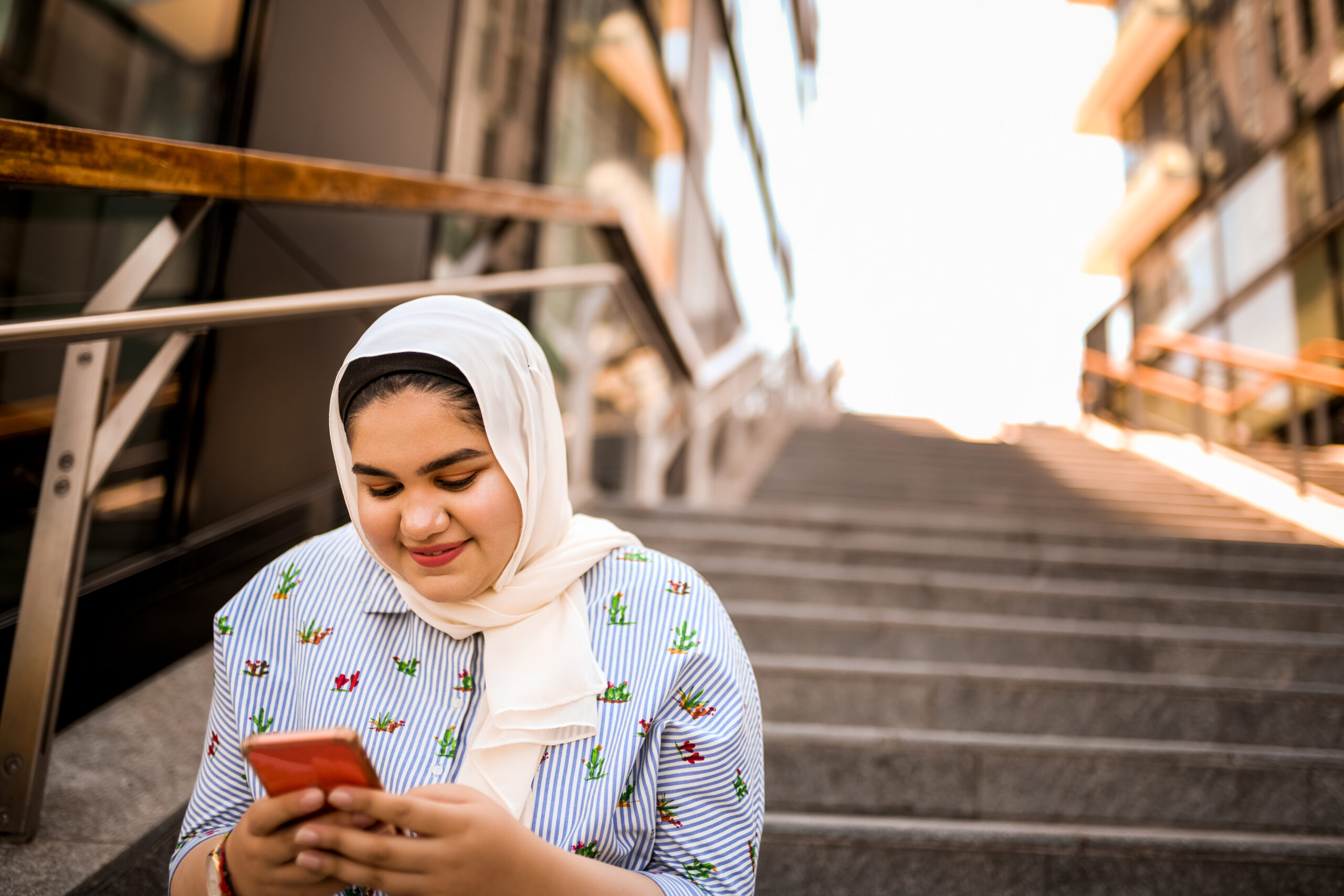Lesson Overview
Students will learn about and identify ways in which various types of media can be used to promote awareness around an issue.
Students will learn about and identify ways in which various types of media can be used to promote awareness around an issue.

Ready?
Begin Lesson
Media is an awesome tool for sharing ideas with others.
For many, digital media platforms are their favorite way to communicate their messages. For instance, Manal Alalem uses YouTube to create cooking videos that celebrate Arab cuisine, and Sondos Alqattan uses Instagram to share skincare, makeup, and hairstyling tips to empower women and build confidence.
Sometimes, young advocates use digital media to target specific problems.
When engaging in advocacy efforts, media of all sorts can be powerful tools for achieving our goals. In the following activity, you will explore this idea by creating a message and spreading it across various types of media to reach a large audience.
Find an example of media (e.g., a YouTube video, Facebook post, a picture) that is inspiring and might be a good way to help spread a message about a cause that you care about. You will have 15 minutes to find this content. Afterward, you will show the group what you found and why you think it is inspiring.
Give students 15 minutes to find an example of media that they believe effectively spreads a message about a cause. Afterward, take 15 minutes and ask each student to briefly describe and/or show the media to the group and discuss why they think it is inspiring.
The second portion of this assignment may be completed during the current or second group convening, depending on the time allotted.
Now that we’ve found and discussed an inspiring and effective example of media to promote a cause, it’s time for you to create your own media content around a cause you care about.
Over the next 20 minutes, think of a cause that is important to you and write down your idea for a specific type of media to raise awareness around the cause. This might include:
In addition to this idea, please also write down at least two possible ways you might spread your media message to increase visibility and awareness of the cause.
Give students 20 minutes to write down their ideas. Afterward, ask students to share what they wrote with the larger group. Take 15 minutes for discussion.

Congrats!
You've finished the lesson

Students will learn how to keep their online information more secure by using and maintaining strong passwords. Students will learn about the principles of strong password design and the potential problems of password sharing.
View Page
Students will learn about malicious online users who might attempt to use security weaknesses to gather information about them.
View Page
Students will learn what information verification is and why it is important for news consumers to verify the stories they read or view.
View Page
Students will learn about a five-step checklist they can use to verify the origin, source, date, location, and motivation of a news image or video.
View Page
Students will define what a scrape (a copy from an original) is and explain why this can make the verification process more difficult.
View Page
Students will learn how to keep their online information more secure by using and maintaining strong passwords. Students will learn about the principles of strong password design and the potential problems of password sharing.
View Page
Students will learn about malicious online users who might attempt to use security weaknesses to gather information about them.
View Page
Students will learn what information verification is and why it is important for news consumers to verify the stories they read or view.
View Page
Students will learn about a five-step checklist they can use to verify the origin, source, date, location, and motivation of a news image or video.
View Page
Students will define what a scrape (a copy from an original) is and explain why this can make the verification process more difficult.
View Page